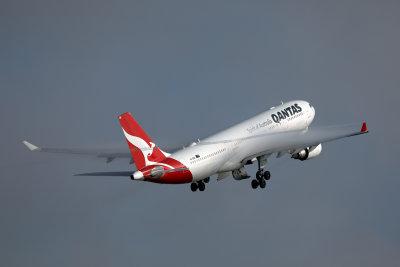
Qantas Group is predicting a sustained rebound in its international operations as more aircraft are delivered or return from storage amid rising demand.
The Australian airline group forecasts that international capacity will recover to 66% of 2019 levels in the three months ending Dec. 31, its fiscal second quarter, marking a significant improvement from 56% in the previous quarter.
International capacity is expected to rise to 72% of 2019 levels in the company’s fiscal third quarter (beginning Jan. 1) and to 82% in the fiscal fourth quarter (starting April 1, 2023). The increases will be largely driven by the return of more of the airline’s Airbus A380s from storage and heavy maintenance, as well as the delivery of additional Boeing 787-9 aircraft for Qantas mainline and A321LRs for the group’s Jetstar subsidiary.
Meanwhile, domestic capacity is predicted to rise at slower levels as it approaches complete recovery. Group capacity in the domestic network is expected to be at 95% of 2019 levels in the current quarter ending Dec. 31, rising to 98% in the fiscal third quarter ending March 31 and to 102% in the fiscal fourth quarter ending June 30, 2023.
Domestic capacity will actually be slightly lower than previously planned. Qantas Group has scaled back its domestic capacity guidance by six percentage points, in an effort to prevent system disruptions from derailing its recovery.
Qantas has managed to improve its operational performance following a period of flight delays, cancellations and baggage problems in June and July. The carrier said it has now improved its on-time performance and cancellation rates to pre-pandemic levels.
